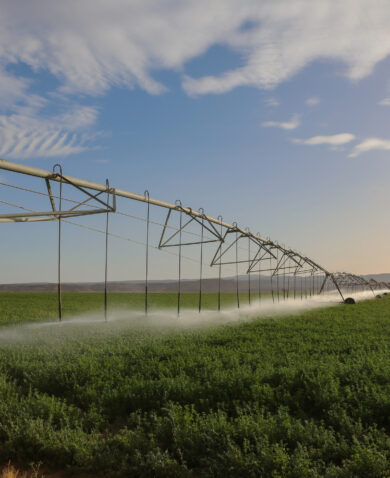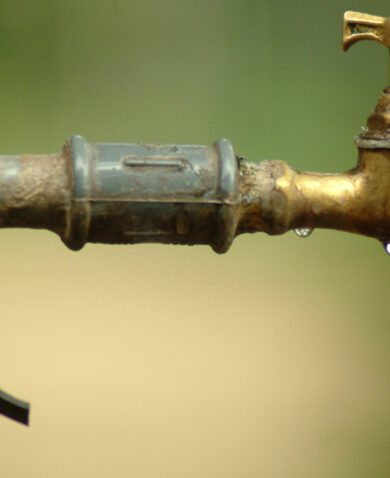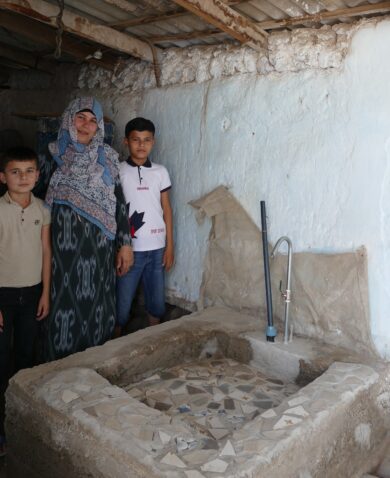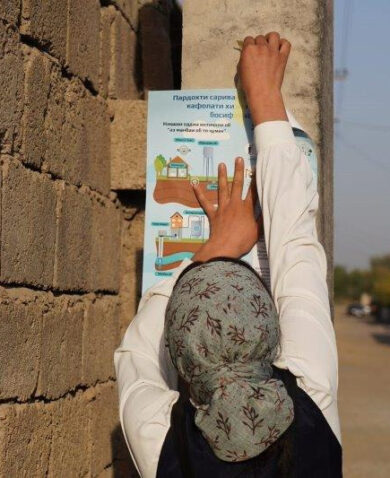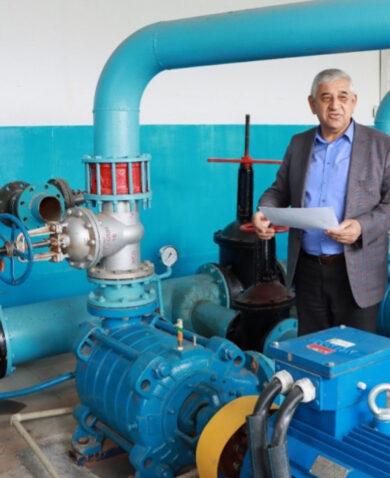
To Improve Water, Sanitation, and Hygiene, Look Toward Waste Management
August 30, 2017 | 4 Minute ReadBodies of water are expected to contain more plastic than fish by 2050. Joshua Palfreman discusses the importance of better solid waste management and approaches to turn the tide.
If you’ve ever seen a field covered in garbage in a developing country, you have some idea of the waste management challenges faced by various urban economies in sub-Saharan Africa. An explosion in urban migration and unplanned settlement, as well as a lack of urban planning to accommodate basic utility support infrastructure and services, has resulted in widespread environmental contamination and a very costly clean-up operation. As little as 41 percent of solid waste is collected in sub-Saharan African cities and 18 of the world’s 50 worst dump sites are in Africa.
Looking into the future, urban development urgently requires a sustainable solid waste management solution. By 2025, waste generation is expected to double. The United Nations Department of Economic and Social Affairs predicts that between 2014 and 2050, the global urban population will rise from 3.9 billion to 6.4 billion, and that approximately 90 percent of this population boom will take place in Asia and Africa. Urbanization and development are directly linked to waste generation. At the start of the 20th century, the less than 15 percent of the global population residing in urban areas (some 220 million people) cumulatively produced less than 300,000 tons of waste per day. By the start of the second millennium this figure had grown tenfold, with 2.9 billion urbanites (49 percent of the global populace) generating three million tons. Perhaps more worrying, however, are projections for “peak waste” — the time the world can expect waste generation to plateau. The Organisation for Economic Co-operation and Development (OECD) currently estimates that OECD nations will reach “peak waste” by 2050 and that nations in Asia and the Pacific will follow around 2075. In sub-Saharan Africa, however — the continent with the lowest proportion of urbanites, but highest urban growth rates — peak waste will not be reached until after the start of the next century.
Aside from contravening key principles of Sustainable Development Goal 12, which commits to ensuring sustainable consumption and production patterns, booming waste generation will have direct impacts on water, sanitation, and hygiene (WASH). This post highlights the widely neglected link between sustainable solid waste management practices and WASH, by taking a deeper look at the solid waste management approaches, technologies, and business models that the WASH sector could adopt to address some of the world’s most pressing water, sanitation, and hygiene challenges.
The neglected cause
Traditionally, efforts in the WASH community have been directed towards popular interventions such as fecal sludge management or the chlorine-based filtration of potable water supplies. The contamination risks posed by improperly managed hazardous waste, however, are seldom addressed. Asbestos, phosphates, lead, oils, fertilizers, pesticides, petrochemicals, nitrates, and mercury identified in water supplies, for example, can lead to mammoth losses of water resources. Additionally, improperly managed non-hazardous municipal solid waste is a key cause of urban flooding by blocking drains and the natural flow of bodies of water. The lack of lining or proper sanitary landfilling is one of the leading causes of groundwater contamination. Lastly, improperly managed solid waste travels. An amount between 1.15 and 2.41 million tons of micro- and macro-plastic from river surface waters in Europe, Asia, and North and South America find their way into the world’s oceans every year. Bodies of water are expected to contain more plastic than fish by 2050.
Market-led solutions
Urban WASH and solid waste management (SWM) in the developing world share a common history with regard to their dependence on public subsidies and governance, but will ultimately be forced to adopt market-led, business-centered solutions. Strained municipal budgets, utility rationing, and the sharp rise of informal, unplanned settlements will demand the integration of smart technological and business modelling solutions to maintain the availability of these critical urban utility services. The waste management sector has already greatly benefited from entrepreneurialism and innovation from the private sector, with many notable sustainable waste management practices transforming themselves into independent industries in their own right. Methane recovery technology that extracts energy from a landfill is now part of the renewable energy sector. Composting of organic waste is applicable in the agricultural sector. Plastic recycling is a key source of plastic parts for IKEA. And paper baling and pulping feeds into the supply of clean, white tissue paper for your kitchen or bathroom. While WASH traditionally cannot offer the same returns on investment that can be realized in the solid waste management sector, it can still borrow applicable private sector-driven solutions to ease the burden.
With respect to technology and infrastructure, enzyme-based proteins such as EM-1, popularly used in composting, have been tested successfully in the breakdown of fecal matter in latrines, while methane capture technology, widely employed at landfills, can be tailored to extract energy from piped municipal wastewater. Both of these key technologies are widely produced, engineered, and distributed at a local level within existing markets in sub-Saharan Africa, supporting the ease of adoption and maintenance across various forms of employment.
With respect to service and utility delivery models, the SWM sector has introduced a variety of solutions for challenges that are shared in WASH service delivery — from the integration of geospatial and mobile money services for revenue collection in unplanned settlements; the “rent-to-own” sale of on-site waste receptacle solutions through intelligent branding; and the offering of “pay-as-you-go”, on-demand waste management services that better cater to consumers at the bottom of the pyramid as well as service industries (e.g. hotels, restaurants) that produce substantially different waste quantities and typologies at different times of the week or year.
A greater investment in sustainable solid waste management practices can have secondary benefits for water supply, sanitation, and hygiene, and WASH can benefit from embracing technologies that have been successful in SWM. While sustainable solid waste management and recovery practices were omitted from the Millennium Development Goals, their strong presence in the Sustainable Development Goals calls upon relevant stakeholders in the public, private, and community-based sectors across both the SWM and WASH areas to work in collaboration to develop innovative, market-led business solutions to enhancing the delivery of these key municipal urban utility services.




